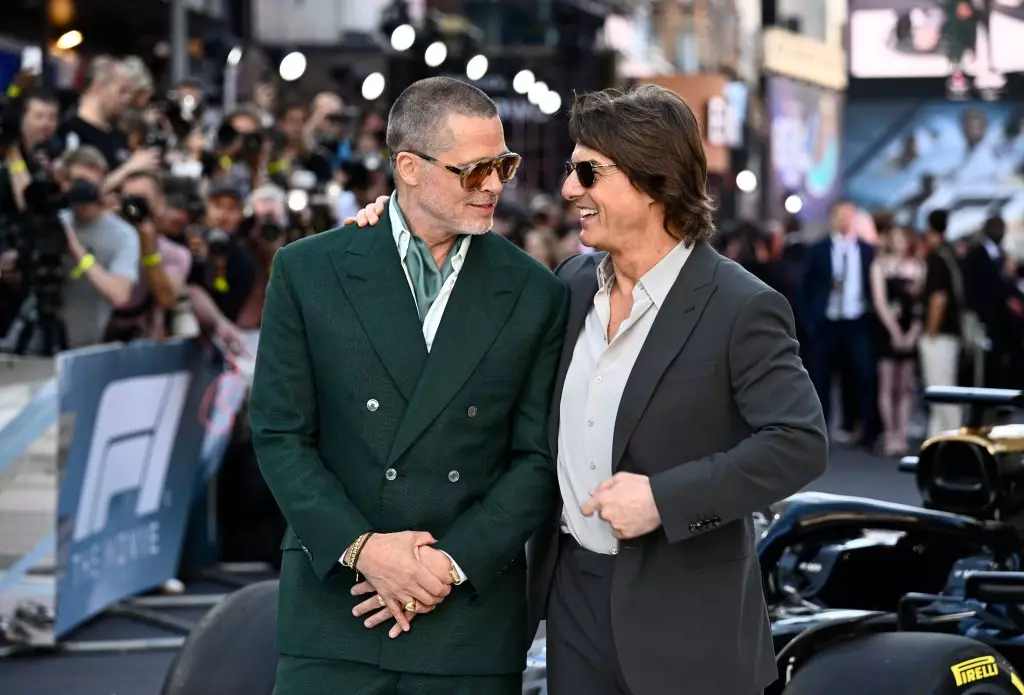The story behind Hollywood’s racing epics is often as complex and high-octane as the sports they depict. Films like *Ford v Ferrari* exemplify how passionate storytelling, combined with star power, can ignite the imagination of audiences worldwide. Yet, what’s fascinating is how many of these projects are influenced not merely by script and vision but also by the personalities and ambitions of the actors involved. Analyzing the behind-the-scenes dynamics reveals that creative collaboration is frequently dictated by the desire for authentic experience—such as actors wanting to drive, race, or embody their characters fully. This yearning is not trivial; it underscores a fundamental truth that realism and genuine passion deliver compelling cinema. For instance, stars like Brad Pitt and Tom Cruise have long expressed a desire to physically participate in their roles—an approach that injects authenticity but often complicates project development.
Star Power and Personal Aspirations: A Double-Edged Sword
Both Pitt and Cruise have shown that their interest in racing extends beyond mere acting; they crave immersion. Pitt’s reflection on the *Ford v Ferrari* project reveals the central conflict: two leading actors both wanting to embody the essence of racing through actual driving. This desire, while idealistic, occasionally acts as a barrier in the filmmaking process—not because of technical constraints but because of differing creative visions. Cruise’s history with action stunts and driving sequences demonstrates a pattern where such involvement elevates a film but introduces logistical challenges. When Tom Cruise originally bowed out of the project, it wasn’t simply about scheduling but also about whether his ambitious vision could be realized within the studio’s constraints. These dynamics reflect a broader tension in Hollywood: the need to balance star-driven authenticity with practical production considerations.
The Reality of Filmmaking Obstacles
Director Joseph Kosinski’s recounting of the *Ford v Ferrari* project highlights an often-overlooked aspect—budget limitations and studio hesitations. Despite the film’s critical and commercial success, its journey was fraught with financial hurdles. This underscores an essential lesson: even compelling stories rooted in history and adrenaline-fueled action can falter not due to lack of interest but because of fiscal prudence. The choice of who directs, cast, and invests hinges heavily on budget realities, often limiting the creative scope. Kosinski’s suggestion that audience reception might dictate a sequel emphasizes how much of filmmaking is a gamble involving expectations, market viability, and star power. The film’s partnership with Formula 1 and its detailed portrayal of racing fundamentals demonstrate a careful effort to bring realism, yet studio objectives remain paramount in shaping these narratives.
The Future of Racing Films: A Personal and Cultural Perspective
Brad Pitt’s openness about returning to racing roles suggests that the genre remains a fertile ground for emotional storytelling and commercial success. His penchant for physically engaging with the material—like driving—proves that authenticity significantly impacts audience engagement. Yet, Pitt’s comments also reveal a nuanced understanding of his character’s arc and where future stories could go. Whether it’s his creation of speed records on the Bonneville Salt Flats or a more story-driven comeback, his perspective underscores that racing movies are as much about personal passion as they are about spectacle. Such projects offer a lens into human ambition, resilience, and the relentless pursuit of excellence—elements that resonate universally.
The Power of Authenticity in Action-Driven Cinema
Ultimately, the enduring appeal of racing films lies in their ability to translate adrenaline into relatable human stories. The desire of stars like Pitt and Cruise to physically engage with their roles showcases a larger truth: authenticity fuels audience connection. Films that allow actors to perform their own stunts or intimately understand their characters’ worlds tend to elevate the storytelling and make the experience more visceral. Moving forward, harnessing this authentic energy along with smart budgeting and innovative storytelling could redefine how racing movies are made and received. This approach could even pave the way for a new era of action films—ones that rely less on CGI and more on genuine effort, courage, and dedication from everyone involved, starting from the stars themselves.
The landscape of racing films is as dynamic and unpredictable as the sport itself. It’s a realm where personal ambition, creative vision, and financial realities collide, shaping iconic stories that resonate far beyond the track. If Hollywood continues to embrace authentic storytelling fueled by genuine passion—be it from stars or filmmakers—the future of racing cinema looks promisingly exhilarating.

